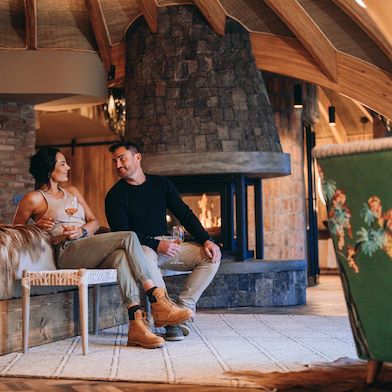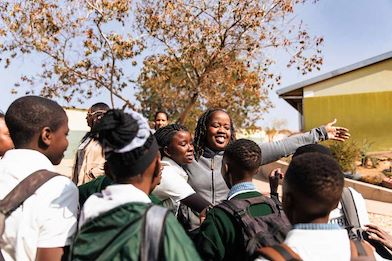Traditionally, the Himba community – among the last semi-nomadic people in the world – have relied on collecting water from the banks of the Kunene River for domestic use, including drinking, cooking, and washing. This necessity posed serious health and safety risks, especially human-wildlife conflict with crocodiles, which are known to attack people and their livestock when opportunities present themselves.
“The dangers were very real”, said Agnes Kerii, Wilderness Namibia Impact Manager. “There have been many incidents over the years, with the most recent involving a young boy from Sesfontein, who sadly lost his life in a crocodile encounter. These weren’t isolated events – they reflected a deep need in the community, which we were pleased to help address”.
In close consultation with local Himba leaders, government representatives through the Kunene Governor’s office, and technical partners, the six-month-long project included the installation of solar-powered water pumps, storage tanks, and access points, providing the community, and their prized livestock, with daily access to clean, safe water.
The land on which Wilderness Serra Cafema is located is leased from the 300,000-hectare Marienfluss Conservancy, which is primarily owned by the Himba people. Wilderness Namibia has built long-standing and respectful relationships with this community over decades, and during this time it has supported them through its renowned Impact strategy to Educate, Empower and Protect.
In line with the company’s Empower pillar, community engagement was incorporated at every stage, to create job opportunities and a sense of shared ownership for the project. Local community members have been trained to monitor and maintain the infrastructure, while Wilderness Namibia will also continue with upkeep and repairs over time.
Community members, Karotujambo Tjambiru and her family, were particularly instrumental in guiding the construction. “They helped us find the best terrain to lay the pipes and connect them to the tanks, and it was their local knowledge that helped make this project a success”, explained Agnes. “They’re still proudly involved in its maintenance today, ensuring the long-term success of this project”.
In Himba culture, it is traditionally the women and children who are responsible for fetching water. Before the project was completed, they would travel to the river in groups, with some keeping watch for crocodiles, while others collected water. This meant risking their lives on a daily basis, while taking up time they could have spent on other responsibilities.
Agnes shared how the new solar pump has lifted a heavy burden: “I’ll never forget the first day. Children swam and played, women filled their containers and washed garments that they wrap around their traditional outfits when they travel to town, and the goats drank freely. One woman simply stood smiling – a moment of pure joy and relief”. Himba elders echoed this gratitude. Traditional authority councillor Kapiarukoro Tjambiru described the pump as a sign of respect from Wilderness towards his people, saying that they would always be thankful that they no longer need to risk their lives for something as vital as drinking, cooking, or providing their livestock access to water.
Wilderness Namibia plans to continue exploring similar community-led water access projects in its partner conservancies across the country, in line with its Impact strategy, as well as with Namibia’s Vision 2030 and the United Nations Sustainable Development Goals.
“This initiative not only addresses basic human needs, but promotes local resilience, safety, and dignity. With generous support from partners like the Danson Foundation, we’re showing how sustainable tourism and philanthropy can have lasting, life-changing impact on the communities we partner with”, concluded Agnes.






